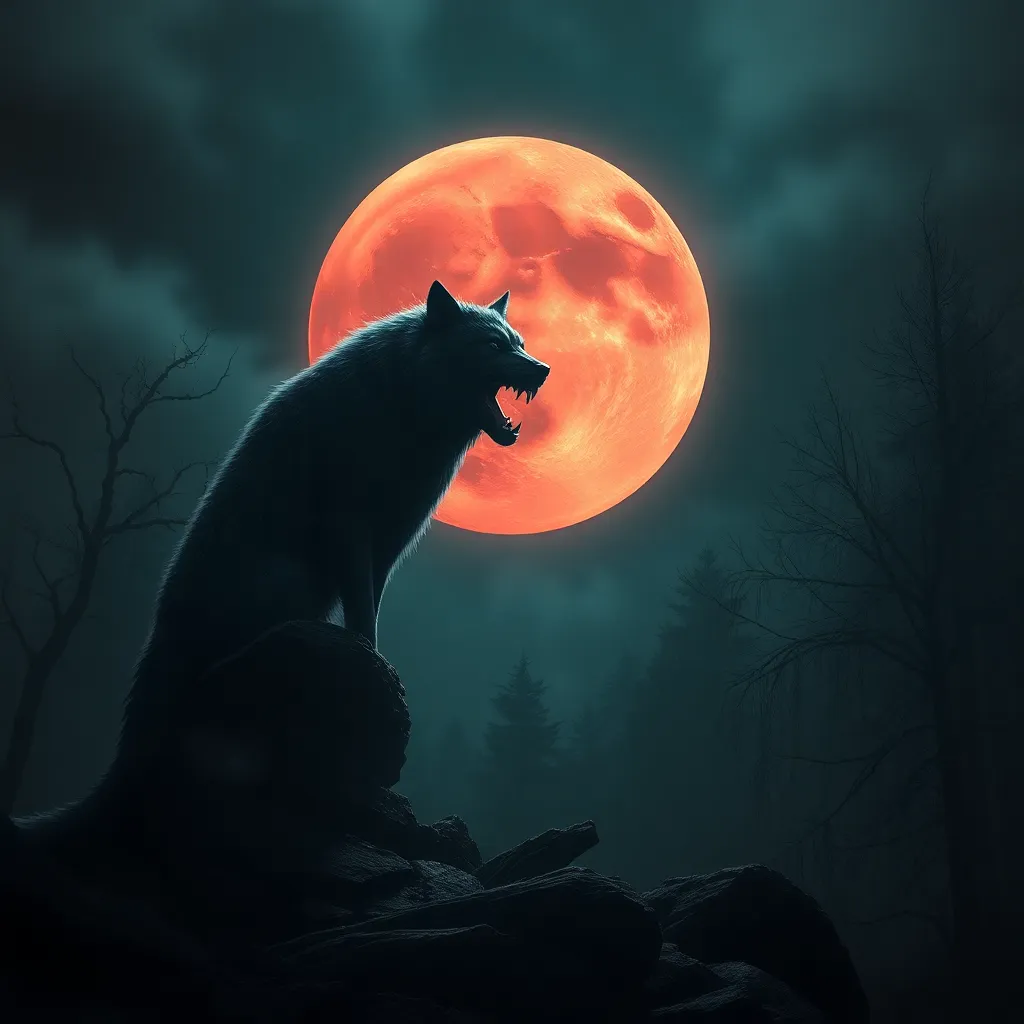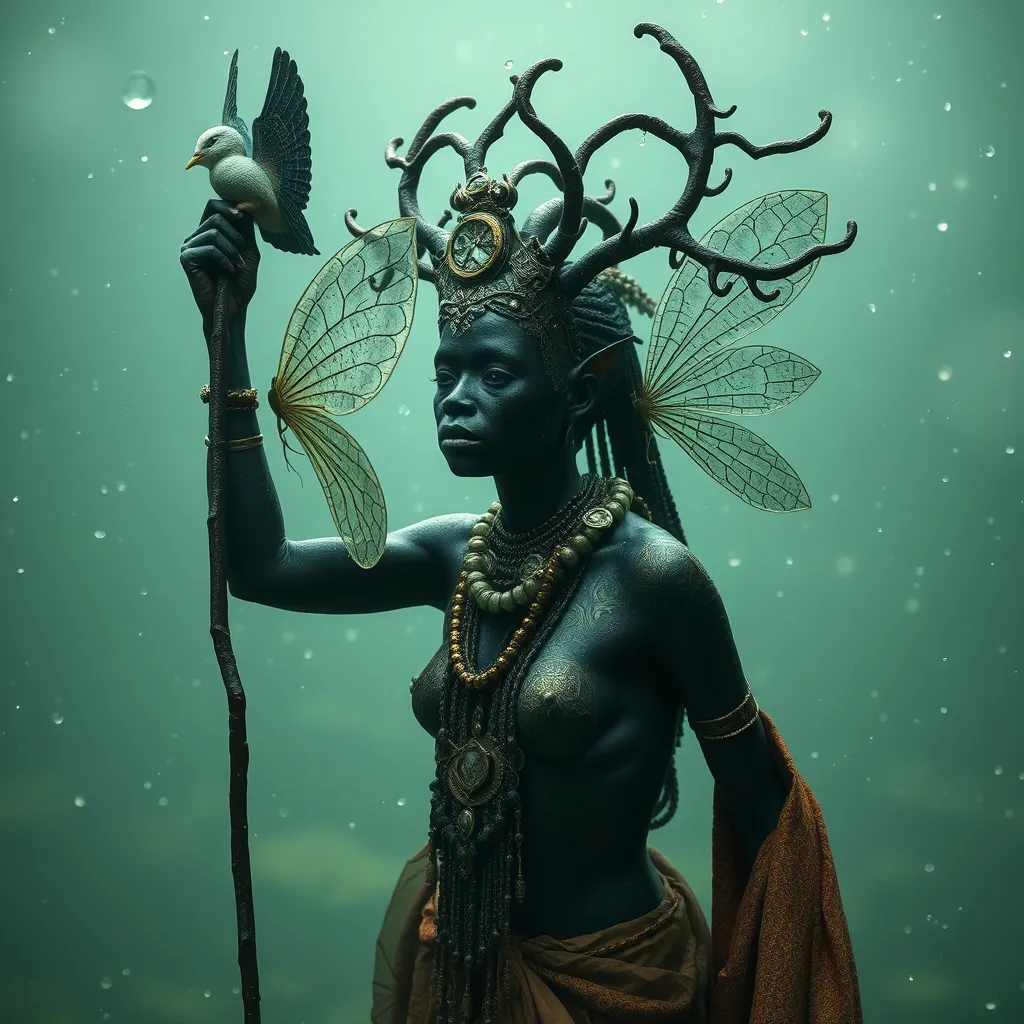The Power of the Blood Moon: Unveiling the Mystical and Supernatural Aspects of Werewolf Transformations
I. Introduction
The Blood Moon, a term often used to describe a total lunar eclipse, is steeped in significance and folklore across various cultures. Its reddish hue during an eclipse is attributed to the Earth’s shadow filtering sunlight, creating a striking visual spectacle that has captivated human imagination for centuries. This celestial event has been linked to numerous myths, legends, and supernatural beliefs, particularly those surrounding werewolves.
Werewolves, or lycanthropes, are creatures of folklore that transform from human to wolf during a full moon. Their stories are rich in symbolism and have evolved through centuries of storytelling. This article aims to explore the profound connection between the Blood Moon and werewolf transformations, delving into the mythology, science, and cultural interpretations that have emerged throughout history.
II. The Mythology of the Blood Moon
Historical references to the Blood Moon can be found across various cultures, often seen as an omen or a harbinger of change. Ancient civilizations, such as the Babylonians and the Greeks, viewed lunar eclipses as significant celestial events, often attributing them to the actions of gods or supernatural forces.
- Babylonian Culture: They believed that the Blood Moon signified a warning from the gods, hinting at impending doom or significant events.
- Greek Mythology: The Greeks saw lunar eclipses as manifestations of divine anger, often leading to the belief that the Blood Moon was a signal for sacrifices.
- Native American Traditions: Many tribes viewed the Blood Moon as a time for reflection and renewal, incorporating it into their spiritual practices.
The symbolism associated with lunar phases extends beyond mere celestial observation. The Blood Moon is often linked to themes of transformation, rebirth, and the unveiling of hidden truths. In folklore, it serves as a backdrop for tales of change, particularly in the context of werewolf legends.
III. Werewolf Legends: Origins and Evolution
The earliest accounts of werewolf lore can be traced back to ancient times, with stories originating in Greece and Rome. The concept of humans transforming into wolves is prevalent in various cultures, showcasing the fear and fascination surrounding the idea of shapeshifting.
- Greek Lycanthropy: In Greek mythology, Lycaon was transformed into a wolf by Zeus as punishment for his impiety.
- European Folklore: During the Middle Ages, werewolves became synonymous with witchcraft, often leading to witch hunts and trials.
- Indigenous Legends: Many Native American cultures have stories of skinwalkers, witches who can transform into animals, paralleling the werewolf myth.
Throughout history, the connection between lunar cycles and werewolf transformations has been emphasized. The full moon, particularly the Blood Moon, was believed to amplify the transformation process, making it a pivotal element in werewolf folklore.
IV. The Science Behind Lunar Effects on Human Behavior
The effects of the moon on Earth are scientifically evident, particularly in its gravitational influence on tides and terrestrial life. However, the belief that the moon can also affect human behavior has been a topic of debate among scientists and psychologists.
- Tidal Influence: The moon’s gravitational pull causes the ocean’s tides, and its phases have been known to influence various biological processes in animals.
- Psychological Studies: Some studies suggest a correlation between lunar phases and human behavior, including increased crime rates and mental health issues during full moons.
- Transformation Myths: Theories propose that the mystical aspect of the Blood Moon could enhance the psychological and emotional states that lead to the belief in transformation myths.
V. The Transformation Process: Mystical and Supernatural Elements
In the lore of werewolves, the process of transformation during the Blood Moon is often depicted as a ritualistic event. This transformation is not merely physical but also profoundly emotional and psychological.
- Ritualistic Aspects: Many cultures have rituals associated with the full moon, where participants might invoke the moon’s power to encourage transformation or healing.
- Physical Changes: Descriptions of werewolf transformations often include painful physical changes, such as elongating limbs, growing fur, and heightened senses.
- Emotional Changes: The transformation can lead to a loss of control, primal instincts taking over, and a conflict between human and beastly natures.
This intersection of mythology and the supernatural during lunar events creates a rich tapestry of stories that resonate with human fears and desires.
VI. Modern Interpretations and Popular Culture
In contemporary literature and film, werewolves continue to be a popular subject, with many narratives incorporating the Blood Moon as a pivotal element. Works of fiction and media portray werewolves in various lights, from horrifying monsters to tragic heroes.
- Literature: Novels like “The Last Werewolf” by Glen Duncan explore the complexities of werewolf identity against the backdrop of lunar cycles.
- Film: Movies such as “An American Werewolf in London” depict the transformation process as both terrifying and tragic, often linked to the full moon.
- Television: Series like “Teen Wolf” and “The Wolfman” have modernized the werewolf myth, intertwining it with themes of adolescence and identity.
The Blood Moon has influenced these narratives, serving as a symbol of transformation and the struggle between humanity and bestiality.
VII. The Blood Moon in Contemporary Beliefs and Practices
In recent years, there has been a resurgence of interest in lunar spirituality and the rituals associated with the Blood Moon. Many people gather to celebrate this celestial event, engaging in practices that honor lunar cycles.
- Rituals and Gatherings: Communities often hold gatherings to witness the Blood Moon, incorporating meditation, prayer, and reflection into their practices.
- Lunar Spirituality: The rise of interest in paganism and earth-based spirituality has seen the Blood Moon being celebrated as a time for manifestation and intention-setting.
- Personal Experiences: Many individuals report profound spiritual awakenings or transformative experiences during the Blood Moon, reinforcing its mystical reputation.
VIII. Conclusion
The Blood Moon and werewolf transformations embody some of humanity’s deepest fears and fascinations with the unknown. The mystical and supernatural aspects of these phenomena reflect our desire to understand the world beyond the tangible.
As we continue to explore the interplay between myth and reality, the enduring allure of lunar phenomena like the Blood Moon will undoubtedly remain a significant part of human culture. Embracing these myths allows us to reflect on our own transformations and the mysteries that lie within and around us.



